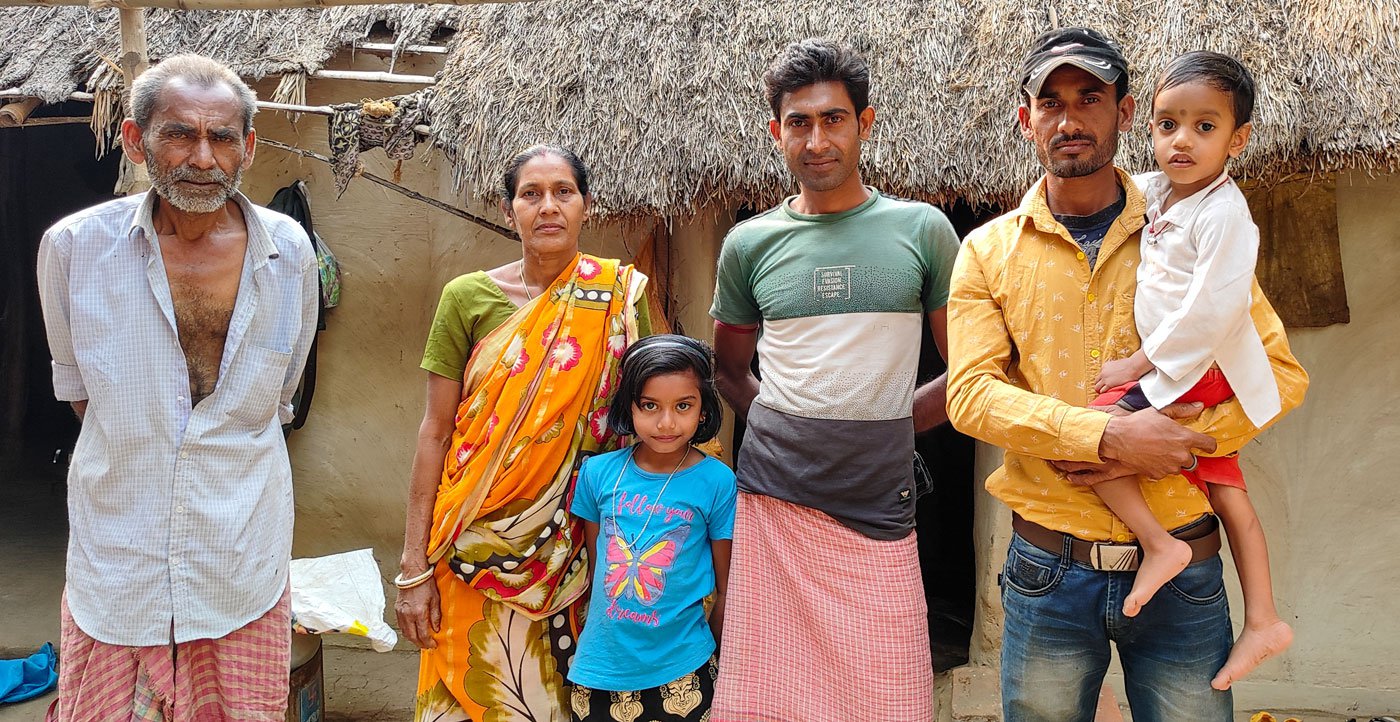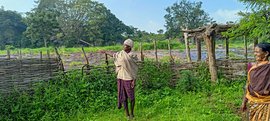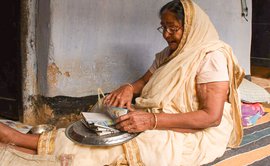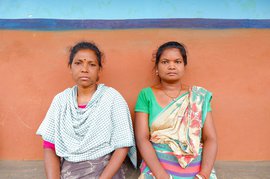Ujjwal Das is the last man standing in Patalpur. Well, the last farming family anyway.
When elephants tore down his home last October, that made it the eighth time in the past 10 years that his mud-walled house in Patalpur village was flattened by marauding pachyderms.
It was harvest time and the monsoons had also arrived – the months of asharh and shraban. The herd had travelled roughly 200 kilometres across hills and forests and reached the village of Patalpur at the base of some hills. They stopped first on the banks of the Siddheswari, a tributary of Mayurakshi where they rested for a while. That’s about a kilometre from the village. Then hungry after their long journey of roughly 200 kms, the herd headed towards the fields with standing crops.
“We went with flaming torches to drive them away, risking our lives,” says Prasenjit, the younger son of Chandana and Ujjwal Das. “Many times, elephants have come and destroyed the [ripe] paddy in the fields. If the elephants eat all the crops, what are we supposed to eat?”
It’s not just the loss of paddy that Das is worried about. The family also grow potatoes, gourds, tomatoes and pumpkins, as well as banana and papaya on their 14 bighas (approximately 8.6 acres).
And then Ujjwal Das is no ordinary farmer – his pumpkins won him a state award, the Krishak Ratna given annually to the best-performing farmer from every block in the state. He won it from the Rajnagar block in 2016 and 2022. He received a cash prize of Rs. 10,000 and a certificate.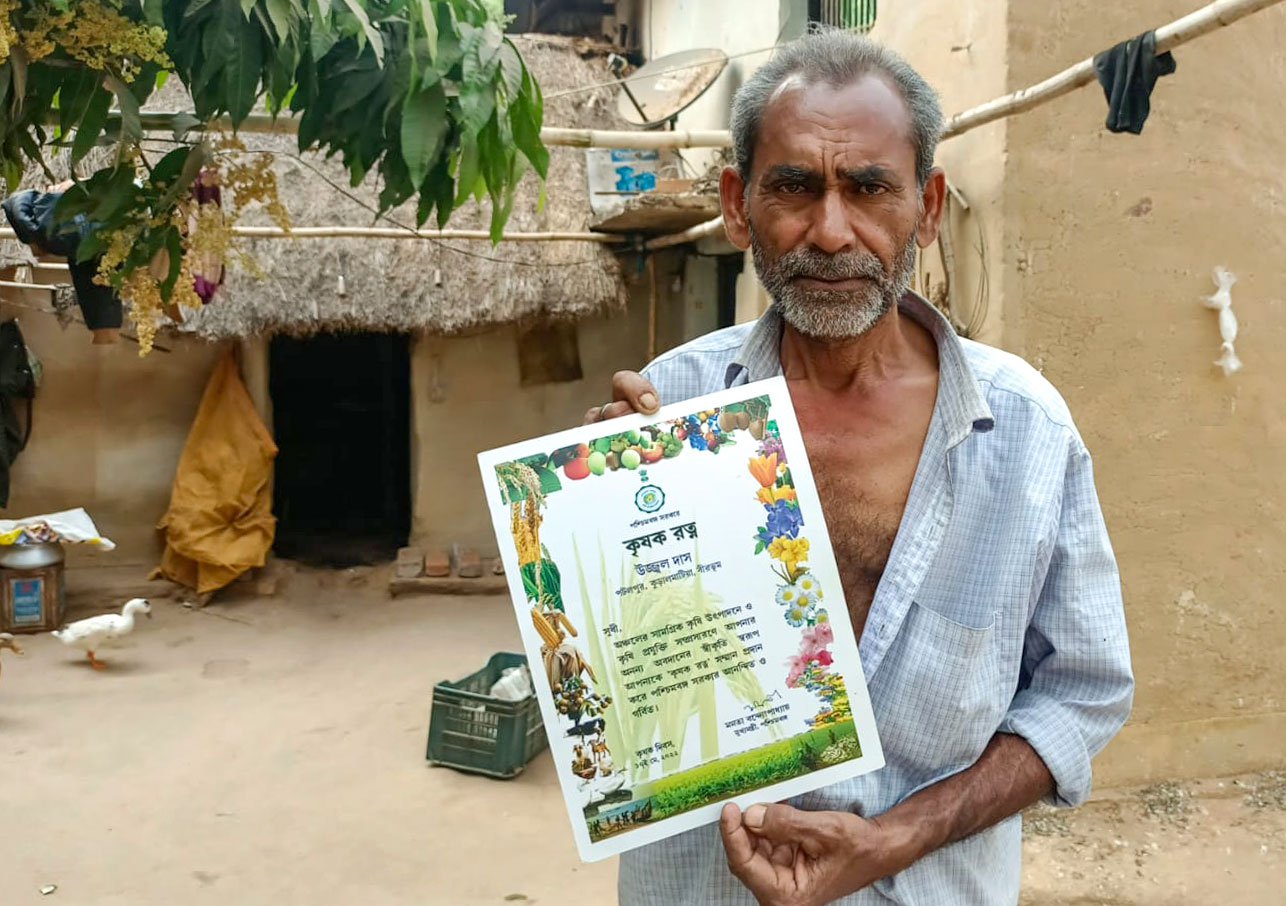
Ujjwal Das holding his Krishak Ratna Certificate. He received this award from the West Bengal government in 2016 and 2022
His home in Patalpur lies at the very western edge of West Bengal’s Birbhum district. The Jharkhand border is a stone’s throw, and every year, hordes of elephants descend here in search of food. First, they wait in the forests adjoining the hills, and then venture into the fields closest to the hills.
One of the first villages they reach is Patalpur. The effect of their visit can be seen in the dilapidated and abandoned houses, broken tulsi manchas and empty courtyards.
Around the time the pachyderms first attacked this village roughly 12-13 years ago, there were 337 residents (Census 2011). Then, over the next decade this number decreased and now (2023), only one family still lives in this village in Rajnagar block, holding onto their land and home. Frightened and distraught by repeated elephant attacks, villagers have migrated to neighbouring towns and cities such as Suri, Rajnagar, and Joypur.
“Those who could afford it have gone to other villages,” Ujjwal Das said, sitting in the courtyard of their one-storey mud house at one end of the village. “I have a big family. I have nowhere to go. What will we eat if we leave?” asks the 57-year-old. Ujjwal’s family, like most people listed as residents here, belong to the Bairagi community, Other Backward Class (OBC) in West Bengal.
Chandana Das, 53, says that when they hear the trumpeting of elephants, they set off for Joypur – five kms from their village. And if that is not possible, she adds, “All of us stay inside the house.”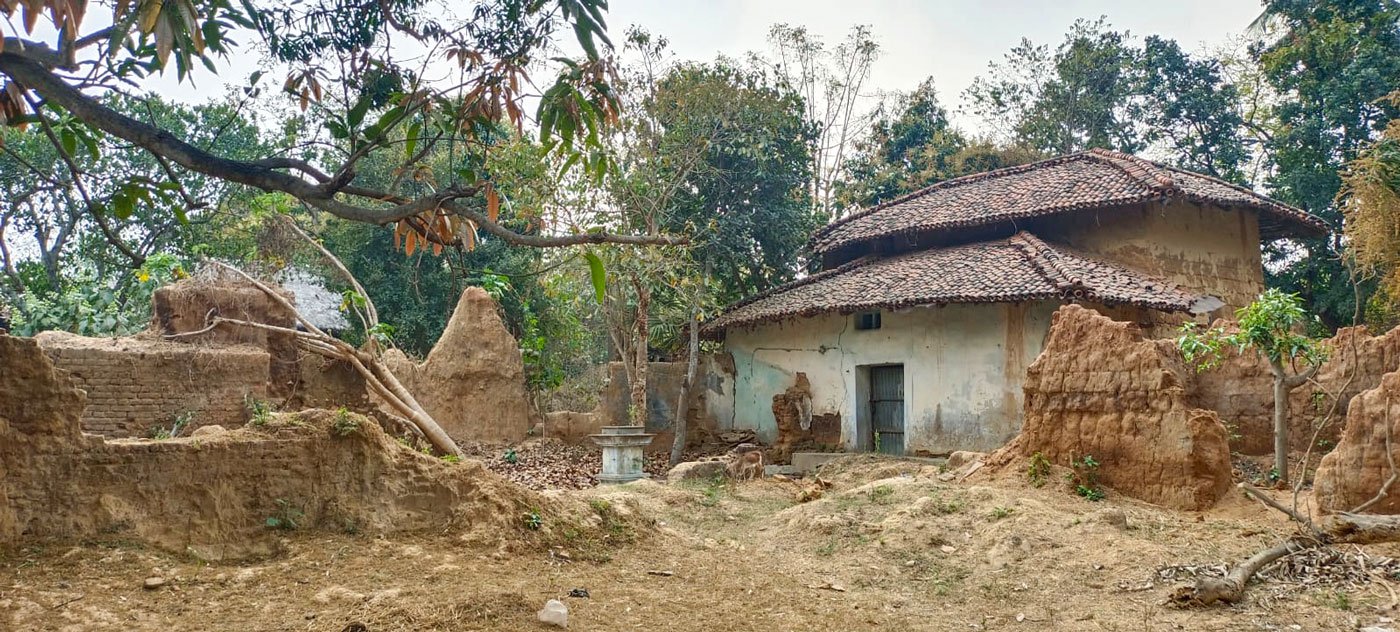
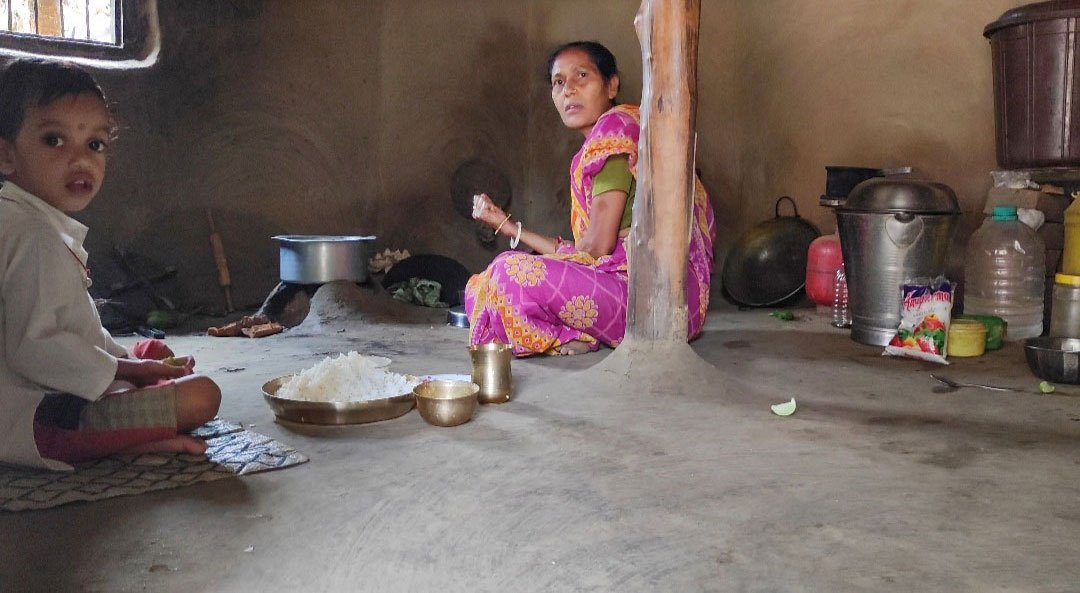
Left: Residents of Patalpur have moved to nearby towns and villages, leaving behind their homes bearing the marks of elephant attacks. Right: Chandana Das in their kitchen with her grandson
The lone residents say that there are other problems as well. The road to this village under the Gangmuri-Joypur panchayat is dangerously close to the forest. But critical to the decision to stay is that sombre fact that ever since the elephant attacks began, no one wants to buy land in this area. “It’s not so easy, therefore, to sell the land and leave,” says Ujjwal.
The other members in this family are Ujjwal’s wife Chandana Das and their two sons – Chiranjit and Prasenjit. Their daughter Baishakhi, 37, was married 10 years ago and lives in Sainthia which is around 50 kms from Patalpur.
The 27-year-old Prasenjit owns a Maruti car and says he earns around Rs. 10,000 renting it out to people in neighbouring villages. Like all the others in his family, he also works on the family land, cultivating rain-fed crops. They keep a portion of the produce for their own consumption and Ujjwal sells the rest in the bi-weekly haat (local market) at Rajnagar, held every Thursday and Sunday. The rest of the week, he travels from village to village, either on his cycle or his son Chiranjit’s motorcycle, selling vegetables. He also sells paddy after keeping aside a certain amount for themselves.
“I have to stay here for the love of my crops, bearing the pain of elephant attacks,” says Ujjwal Das. He does not want to leave.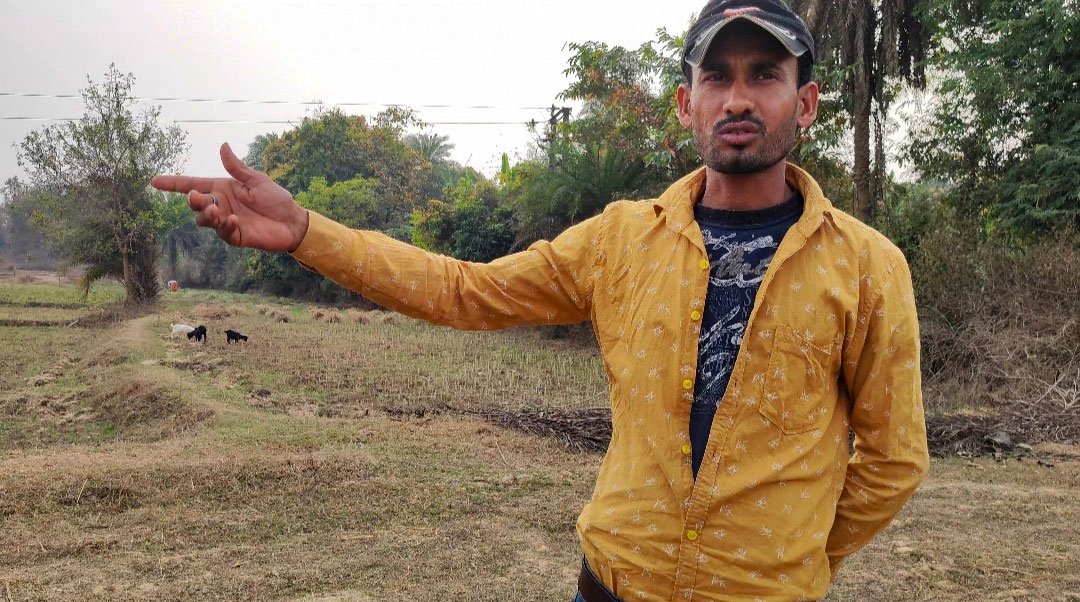
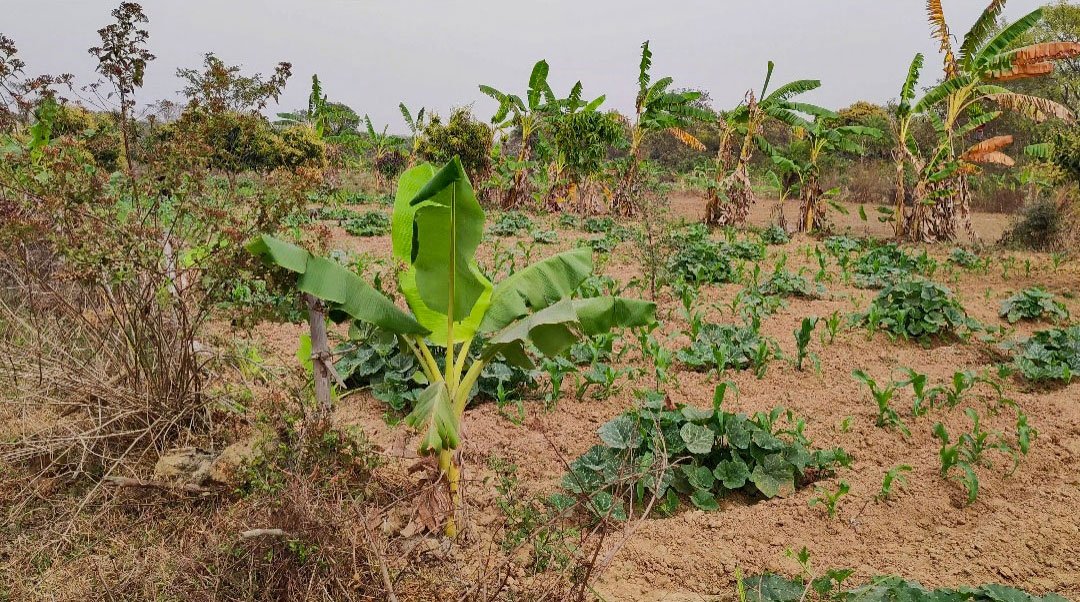
'If the elephants eat all the crops, what are we supposed to eat?' asks Prasenjit Das. He is worried that the elephants might ruin their banana grove among other fields
According to Santosh Karmakar, a former history teacher at Rajnagar High School, the arrival of elephants in agricultural areas is because of shrinking forests. He says the Dalma range in Purulia which they enter after crossing from Jharkhand, earlier had a dense cover of trees and enough food for the herd.
“Today, the elephants are in peril. They are leaving the hills in search of food,” says Karmakar. Rampant deforestation to build luxury resorts as well as increased human presence has resulted in a scarcity of food for the elephants and disturbed their habitat.
This year (2023), no elephants have been spotted in the village, says Prasenjit. But the worry remains: “If they come now, they will finish off the banana grove.” Their banana grove is spread over 10 kathas (0.16 acres).
According to this report of the West Bengal Forest Department, farmers are supposed to receive compensation “against deaths/injuries to human beings as well as damage of houses/ crops/ cattle caused by wild animal.” Ujjwal Das has papers for only four bighas of land. The rest (10 bighas ) he inherited from his ancestors but there are no documents as proof and so he cannot get any money for his losses. “If the elephants destroy crops worth 20,000-30,000 rupees, the government gives something between 500 to 5,000 rupees,” he points out.
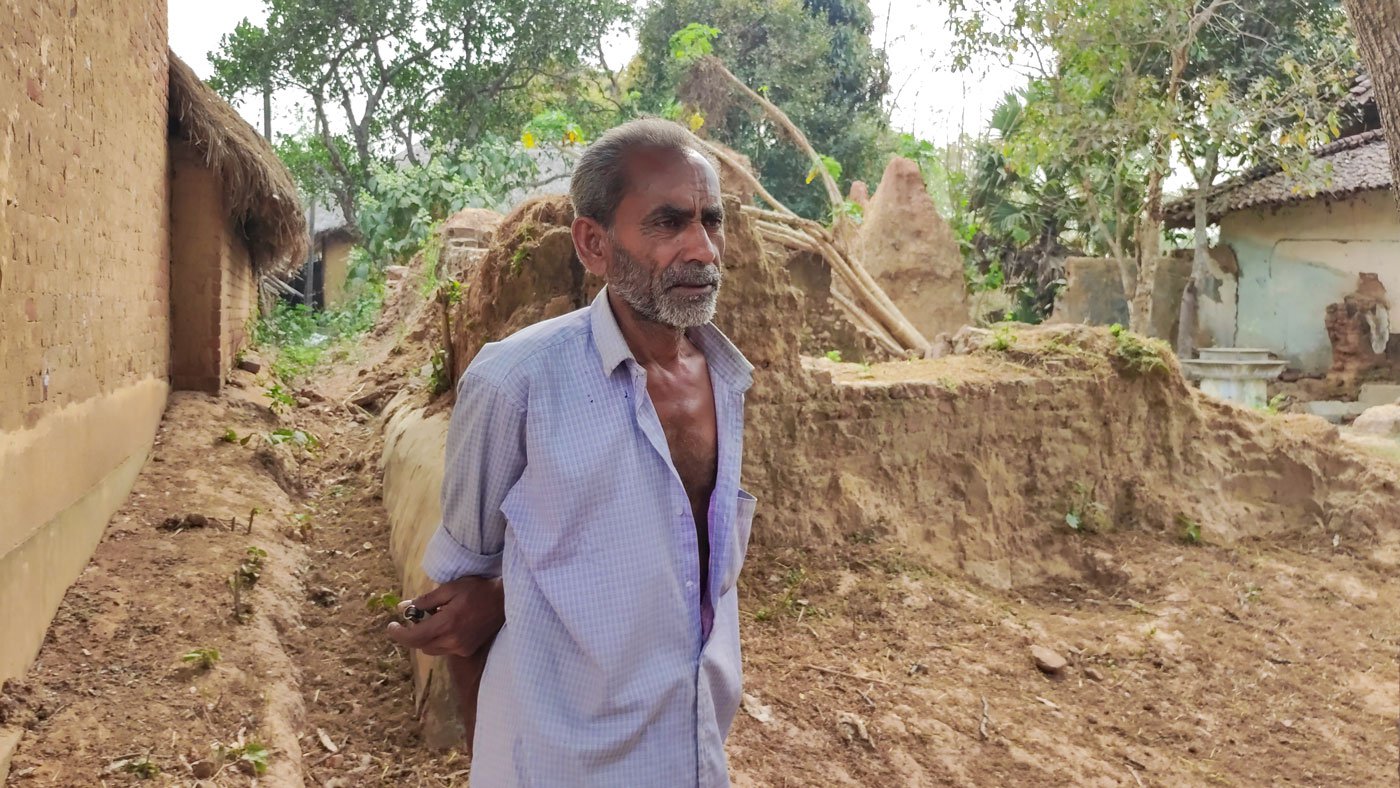
Ujjwal Das, 57, one of the last remaining residents of Patalpur
In 2015, he had applied for and received Rs. 5,000 as compensation from the Block Development Officer in Rajnagar. Three years later, in 2018, he received Rs. 500 from a local political leader as compensation.
Kudrate Khoda, the ranger of the local forest department says that they take all sorts of precautions for the safety and security of the villagers. “We have a car called ‘ AIRAVAT ’. We use this car to sound a siren to drive away the elephants. We drive them away just with the sirens, without causing any physical harm.”
The forest department also has local gajamitras . Five young men from Baganpara, seven kms away from Patalpur, are employed on contractual basis by the forest department to work as gajamitras . They are the ones who send word to the forest department when the elephants come.
But the last few residents of Patalpur do not agree. “We receive no help from the forest department,” Chandana Das argues. The abandoned homes and vacant courtyards underlining their helplessness.
